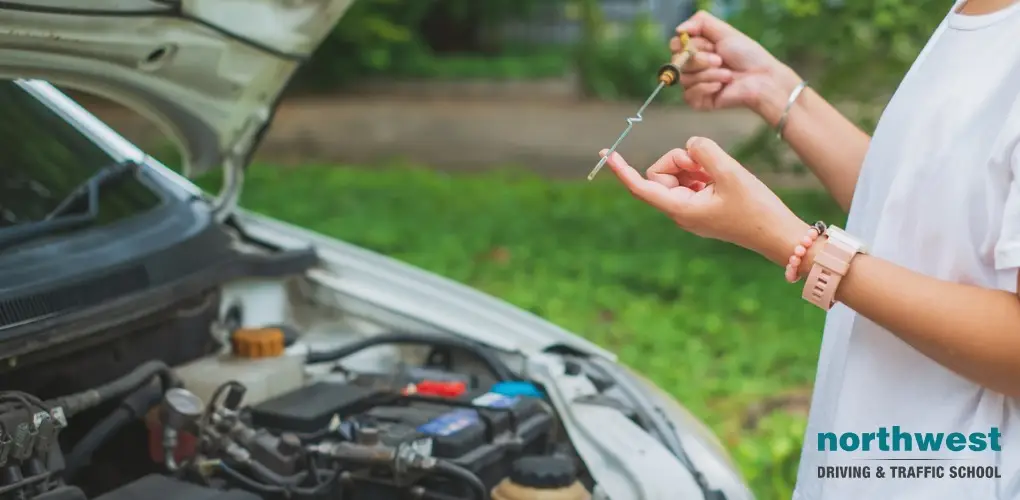- Driving School
Basic Car Maintenance For New Drivers- Part One

Buying your first car is one of the proudest moments of your life, but if you want to keep that car running, it will need maintenance.
In this article, we’ll be looking at simple, easy-to-understand car maintenance for beginner drivers.
Read More: Basic Car Maintenance: What Can You Do Yourself?
Checking Your Tires
Poorly inflated or damaged tires are one of the most common maintenance problems drivers encounter. It is hugely important to check your tires on a regular basis, looking for wear, cracking, bulging, pressure, or objects caught in the tread.
Tire pressure is also important. Low tire pressure will increase your car’s fuel consumption, shorten the tire’s life, and increase the risk of tire failure. High tire pressure will cause diminished grip, reduce stability in braking and cornering, and increase the risk of impact tire damage.
The owner’s manual will list the correct tire pressure for your particular car. Check your tire pressure, including the spare tire, once a week. It’s best to do this when the tires are cold, which means you have driven no more than two miles.
Checking Your Engine Oil
Your engine oil lubricates, cleans, and cools your car’s engine, so if the oil levels drop too low, you risk significant mechanical damage. You should check the engine oil level at least once a fortnight and top up as required.
Do not overfill your engine with oil, as this can create excess pressure, damaging the engine seals and gaskets and cause oil leaks.
To check your oil, take the following steps:
- Ensure your engine is cold and your car is parked on level ground.
- Remove the dipstick and wipe it clean with a cloth. Reinsert it fully, pull it out again, and check that the oil mark is between the “F” and “L” marks.
- If the oil is below the “L” mark, you will need to add more oil.
- To add more oil, find the oil filler cap, usually found on the top of the engine and marked ‘oil’. Unscrew this and place it to one side.
- Pour in a small amount of new oil and recheck the level with the dipstick. If needed, repeat until you have the correct oil level.
Checking Your Engine Coolant
As with your engine oil, engine coolant is vital to the day-to-day function of your engine, and not keeping it topped up can lead to serious mechanical problems. A mixture of water and anti-freeze engine coolant helps remove excess heat from your car’s engine.
You should check your coolant levels once a fortnight and the process goes like this:
- Locate the engine coolant reservoir. Your user’s manual will show you where. Check that the level is between the Min and Max marks. If below the Min mark you will need to add extra fluid.
- Never undo the engine coolant filler cap while the engine is hot. Serious scalding could result from hot fluid escaping from the radiator under high pressure. Place a cloth over the cap and unscrew it slowly. This will allow any pressure to escape.
- Fill the reservoir to the maximum mark. Replace the cap.
- Never add cold water to an overheated engine; let it cool for a while first.
- Never overfill, or the system will blow the excess out as soon as it warms up.
You can check out our continued list of easy-to-do car maintenance for beginners in the second half of this article.


